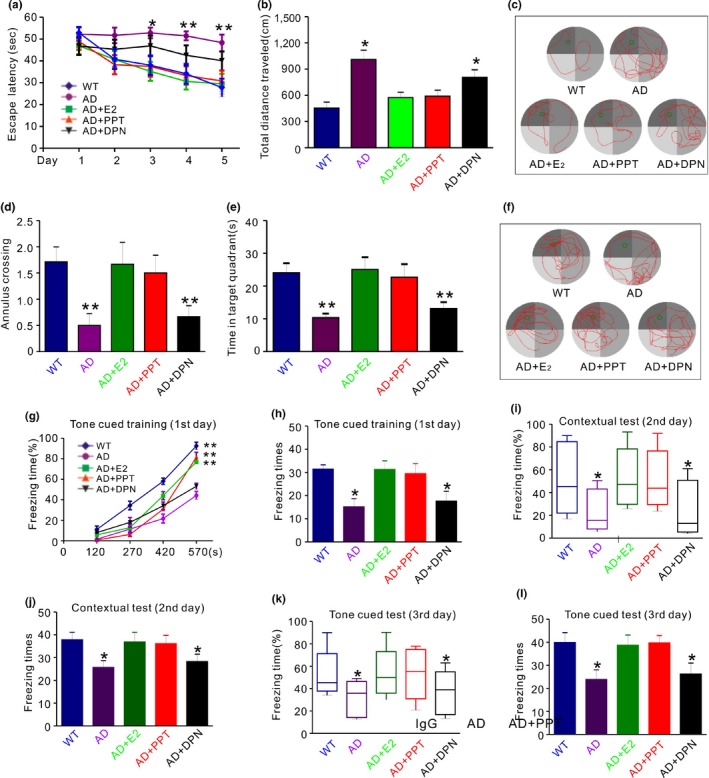Figure 6.

PPT treatment improves spatial and associative learning and memory performance in OVX APP/PS1 mice. (a) Compared with vehicle‐treated APP/PS1 mice (AD), E2 (AD + E2)‐ or PPT (AD + PPT)‐treated APP/PS1 mice show a significantly shorter latency on the third, fourth, and fifth day, respectively. No significant difference is found between DPN‐treated mice and AD mice. (b) In the hidden platform tests on the fifth day, the total distance spent on reaching the platform was recorded. Compared with vehicle‐treated APP/PS1 mice, PPT‐ or E2‐treated APP/PS1 mice show a significantly shorter distance. No significant difference is found between DPN‐treated mice and AD mice. (c) Representative road maps showing the movement trajectory of mice in hidden platform experiment on the fifth day. (d and e) In the probe trial on the sixth day, PPT‐ and E2‐treated mice show significantly more times traveling (annulus crossing, d) and significantly longer time staying (e) in the place where the hidden platform was previously placed, compared with AD. (f) Representative road maps showing the movement trajectory of mice in the probe trial on the sixth day. (g and h) Percentage freezing time as a function of training periods (g) and freezing times (H) are shown in wild‐type mice (WT), APP/PS1 mice treated with vehicle (AD), E2 (AD + E2), PPT (AD + PPT), and DPN (AD + DPN), respectively, on the first day. (i–l) On the second day (I and J) and third day (K AND L), percentage freezing time (i and k) and freezing times (j and l) are shown in the five groups of mice. Compared with AD + E2 or AD + PPT, mice in AD and AD + DPN exhibit significantly reduced freezing time and times of freezing at all points tested. No significance is shown between AD and AD + DPN. *p < 0.05, **p < 0.01 (ANOVA, n = 7–8 per group)
